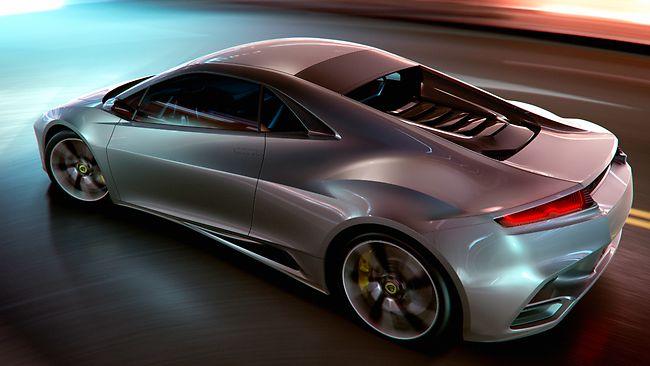Lotus blossoms
ESPRIT, Eterne, Elite - the luxury carmaker has plans for one new car every six months.

WHEN Elmo on Sesame Street does a dance for the letter "E", you can't help wondering whether it's the alphabet or the eponymous drug that inspires him.
Whatever it is, he’s having a ball. Thanks to its rigid product-naming strategy, an obsession with “E” is also evident at Lotus. And at the moment, you would be forgiven for wondering what they’ve been taking, too.
At the recent Paris motor show, Lotus did something carmakers never do: it revealed in one fell swoop its entire product strategy for the foreseeable future. Five cars, all completely new, all at once. That’s unheard of. Carmakers are pathological about secrecy. Revealing model plans stalls potential buyers, who wait for the next big thing, and forewarns rivals about what they need to beat. It exposes a carmaker to unwanted scrutiny and means any deviations from the plan are subject to criticism.
The Lotus move can be traced back to a new boss, Dany Bahar, who has been in the chair just one year. He has been charged with turning the company around.
For the past 15 years, Lotus has made few cars but lots of losses. It needs a fresh direction that involves building more cars and charging more for them. The goal is to become a complete sportscar business, with racing teams, merchandise, brand magazines and so on, in the way a company such as Ferrari has proved can be successful.
This example clearly occurred to the owners of Lotus, who poached Bahar from the red Italian brand. Within a few months of his appointment, he had hired four executives from his old firm and added talent with experience of Porsche, Mercedes AMG and Aston Martin.
The change of direction is nothing if not dramatic. After years getting by with one basic model and a couple of variants, the plan commits Lotus to bringing a new car to market every six months from the start of 2013. They feature engines with four, six and eight cylinders and the option of hybrid technology. They use both mid-engine and front-engine layouts, and there’s even one with four-doors. Between them, the five models cover most of the sports-luxury territory and, if they’re successful, will entail a phenomenal expansion for the brand.
And of course they all have names beginning with “E”.
Lotus was widely thought to be preparing a new supercar and with the Esprit it revives a name made famous by the wedgy underwater car in the James Bond film The Spy Who Loved Me. The new one has a 460kW V8 behind
the cabin and a price around £110,000 ($180,000).
It’s the first, but not the most expensive, of the newcomers. The same V8 is under the bonnet of the Elite, a hardtop convertible, and the Eterne, a sedan. These take Lotus into the luxury grand tourer segment and have prices in Aston Martin territory. By favouring comfort over performance they also tear up the core Lotus mantra about light weight. The Eterne weighs 1.8 tonnes.
Eterne is the only one of the names not previously used by Lotus, which also brings back Elan for
the six-cylinder in the range and continues with Elise, which enters a new generation in 2015.
The Elise, a four-cylinder track-focused roadster, is the only one without the option of supplementary electric motors or an F1-style kinetic energy recovery system. Although judging by the performance of Lotus in F1
this season, the road car division has little to learn from the race team.
Lotus now has a daunting to-do list. Whatever they’re taking, it had better not wear off soon.


